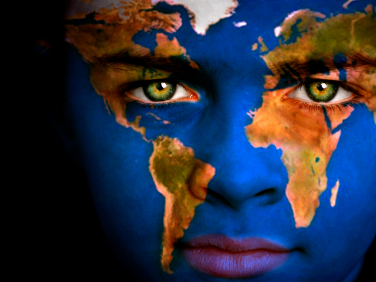Following on from our tour of South East Asia and the Orient, resident expert Peter Clayton takes the community to North, Central and South America, to give us some essential do's and don'ts of etiquette.
Understanding a little about etiquette in different countries can create a good impression and improve confidence on both sides of the table. This article gives a brief insight into North, Central and South America
Canada 
- Firm handshakes with direct eye contact are standard.
- Canadians tend to be comparatively reserved and do not do much gesturing.
- They are generally not especially tactile.
- Quebec, the French-speaking province, follows many French customs.
United States 
- Firm handshakes with confident eye contact are the norm. Men tend to see hugging as an affront to masculinity, and even women do not hug and kiss as much as they do in Europe.
- Silent gaps in conversation may make Americans feel uncomfortable.
- Visitors may notice that winking is comparatively common. This has various meaning, including friendliness, flirtation, or ‘I’m kidding’.
- Try to be punctual for any business or social occasion and dress appropriately. Lateness and sloppiness are seen as marks of a lack of respect.
- Don’t smoke anywhere unless smoking is clearly permitted. In many states it is illegal to smoke anywhere in public and you will be fined at least.
Central and South America
Bolivia 
- Women are expected to dress modestly. Trousers should be loose and skirts should fall on or below the knee.
- Time and time-keeping are not seen as important in Bolivia.
- Nothing in Bolivia is eaten with the fingers, not even fruit, which is eaten with a special fork.
Argentina 
- Argentinians are demonstrative and greet each other by kissing on the cheek.
- Women will probably not talk to new people unless formally introduced.
- Gestures are important. Brushing the tips of the fingers of one hand outward, under the jaw and chin, with the palm of the hand towards the neck, means ‘I don’t know, I don’t care, who knows?’ Bunching the fingertips of one hand together, pointing them slightly upwards, then moving your hand up and down a few times means ‘What do you expect?’
- The correct toast is ‘salud’ (‘health’).
- Drinking mate (pronounced ‘mah-tay’), or Paraguayan tea, is an important ritual. Never refuse if offered.
Brazil 
- In Portuguese-speaking Brazil, the embrace is called the abraáo, and the toast is ‘saude’
- Business cards are always exchanged at meetings.
- A Brazilian might pinch his earlobe to express appreciation.
- Time-keeping is not important. It is normal for Brazilians to arrive an hour or so late for appointments.
Costa Rica 
- Greetings are very important. Men shake hands when meeting and departing, while women kiss each other on the cheek, although in business circumstances they may shake hands.
- Business is conducted in a very formal manner, with jackets kept on. Business cards are exchanged routinely on meeting and, ideally, should be in both English and Spanish.
- Appearances and first impressions are very important here: dress conservatively and be agreeable and friendly.
Mexico 
- Mexicans are touch-friendly. Men let women make the first move when handshaking. An embrace (abrazo) and some back-patting may be introduced at subsequent meetings. In some areas, after handshaking, they slide the hands upwards to grasp each other’s thumbs. The handshake even may be drawn out by touching the forearms.
- Traditional family ties are very strong, and an invitation into a family home is a great honour.
- Women in particular should dress modestly, and everyone should dress respectfully to go into a church.
If you can add to the content please get in touch and when finished I will combine the additions with each article so members can download them for future use. Thank you.
As I mention in previous articles, I became increasingly aware that I could have written a great deal more, with comments on negotiating, seating plans, the appropriate percentage of eye contact and so on and so on. I decided, because of the length of the article, to cut it down and try to give a brief overview. If there are TZ members who can add to the final article I will include them and compile the series into a download.










